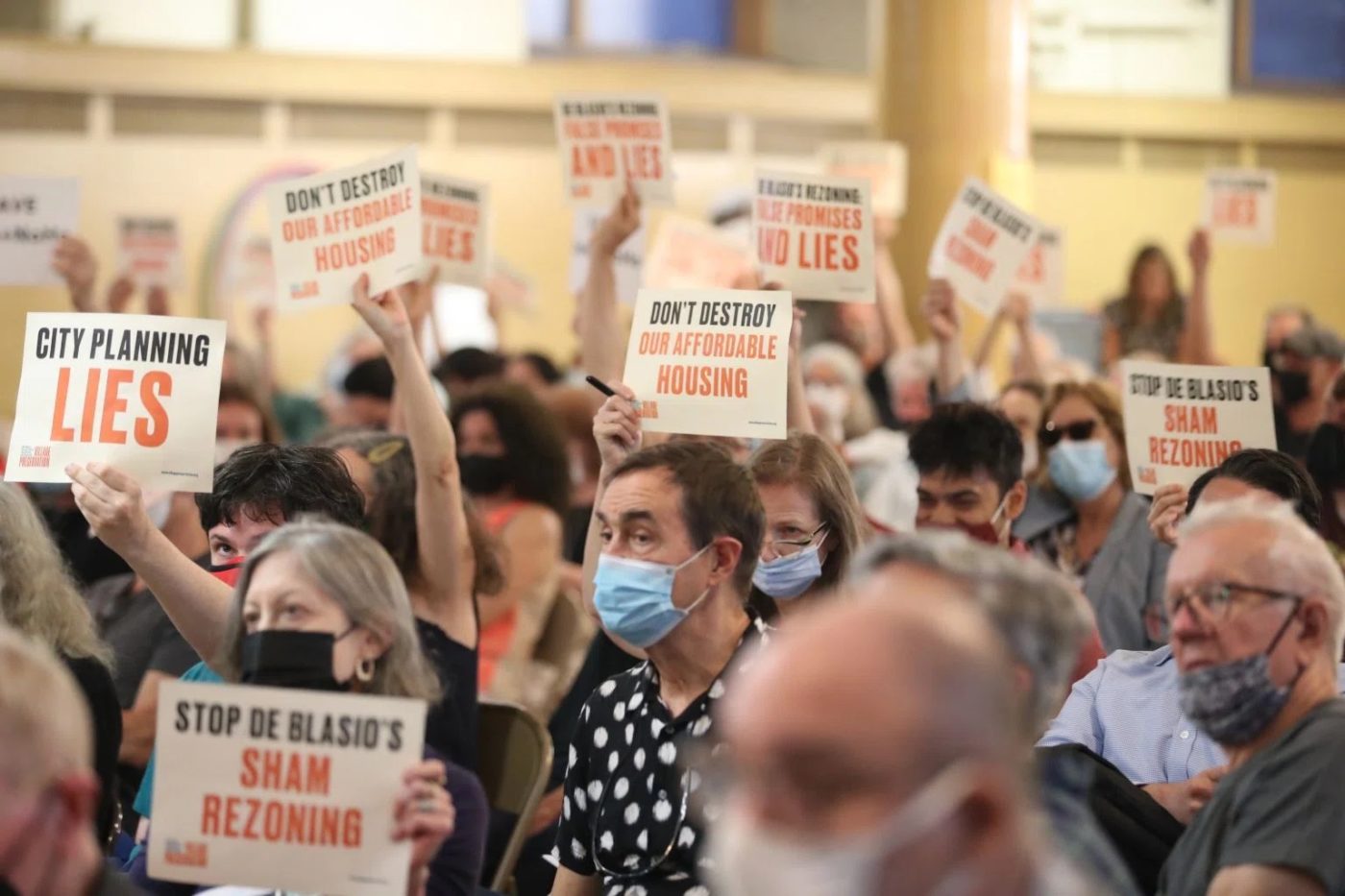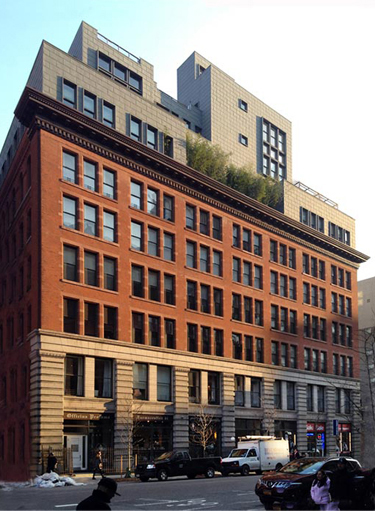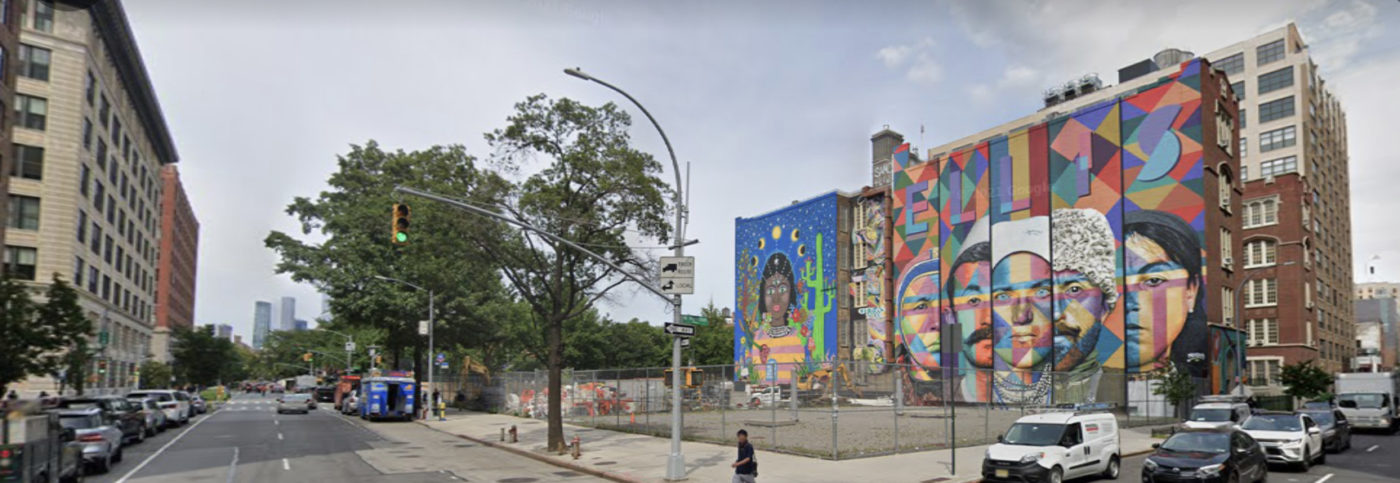City Council Committee Approves SoHo/NoHo/Chinatown Upzoning + Displacement Plan With Modifications

Yesterday the City Council’s Zoning Subcommittee and Land Use Committee each voted to approve a revised SoHo/NoHo/Chinatown Upzoning + Displacement Plan, with changes negotiated by Councilmembers Margaret Chin and Carlina Rivera, who urged their colleagues on the committee to support the plan. All but one did. In short, the revised plan is a bit less awful and harmful than the plan approved by the Mayor’s City Planning Commission, but will still encourage woefully out-of-scale luxury condo, office, hotel, and big-box retail development with little or no affordable housing; demolition of buildings containing truly affordable rent-regulated housing and the displacement of its long-term, largely lower-income, disproportionately senior, artist, and Asian American residents; demolition of historic buildings; and displacement of smaller independent businesses and arts-related uses. The Council chose to try to “improve” a plan that was fundamentally flawed and based upon lies and false data and promises, rather than start anew and try a better approach. The result is a plan that thanks to your advocacy is likely to be less damaging than what the Mayor wanted, but will still be deeply, deeply harmful.

Here are the changes made to the plan as a result of YOUR relentless advocacy:
- University facilities, like NYU, which were originally allowed at great density everywhere within the rezoning area, are now PROHIBITED. This is an issue we had specifically targeted and relentlessly hammered home.
- Retail uses were originally to be allowed at unlimited size; now they are limited to 25,000 sq ft on “wide avenues” and 10,000 sq ft everywhere else without seeking a special permit and public review. This is still way too large (we asked for a cap of 10,000 sq ft) and will encourage big-box chain stores that displace independent and arts-related business.
- Eating and drinking establishments will be capped at 8,500 sq ft without a special permit and public review. This is still larger than the 5,000-sq-ft limit we called for, and is still likely to create problems, but is vastly better than the unlimited size originally allowed.
- The allowable density of commercial development (offices, hotels, etc.) has been lowered in some locations, by as much as 50% as compared to what the Mayor proposed. However, it remains way too high in many locations and will still interfere with the promised creation of affordable housing (more below).
- The overall allowable density of development has been reduced in a few areas, typically by small amounts (developers can build commercial, residential, retail, and certain types of community facility developments, or — more commonly — some combination of those allowable uses).
- The allowable height of new developments has been reduced in multiple areas from what the Mayor proposed, typically by about 30 ft (from 205 to 175, or 145 to 115, for example). Not all areas had height reductions, however, and the allowable height and size of new developments is vastly inappropriate in many locations.

View a map, chart, and summary of the changes from the City Council here.
The revisions did nothing substantive to address the threat that the massive rezoning still poses to the demolition of existing rent-regulated affordable housing in the neighborhood, and the resulting displacement of its residents (beyond that in a few locations the allowable density of new development, which is what incentivizes such demolition, was reduced slightly). This means that in spite of the purported affordability and equity argument for the rezoning, lower-income residents of the neighborhood, who are disproportionately seniors, artists, and/or Asian Americans, and long-term neighborhood residents, are likely to face greatly increased pressure for displacement, and the permanent loss of their affordable housing. See the op-ed in yesterday’s Daily News that speaks to this issue, citing our research and analysis.
The reduction of the allowable density of commercial development, and the elimination of private university development, which Village Preservation highlighted and championed, will make it slightly less unlikely that affordable housing would be included in new developments (and more likely that new developments will be largely or entirely residential). However, as per the analysis we provided to the City Council, the reductions in allowable commercial density made by the Council are unlikely to be sufficient to ensure that affordable housing is included in any new development in the rezoning area, and it should be noted that the rezoning does not require or guarantee a single unit of affordable housing. Village Preservation had urged a different approach, of designating some sites for commercial uses and some for residential and therefore not having the two compete with one another, but the Council and the Mayor refused to consider this. We also urged elimination of exemption from affordable housing requirements for developments with 25,000 sq ft of housing or less per zoning lot; both the Mayor and the Council refused to consider such changes. So the plan continues to rely on grossly inflated zoning bonuses to steer for-profit developers towards including affordable housing, while leaving them what are in many cases more lucrative options for building with no affordable housing whatsoever.
It should also be noted that even if developments are built under the plan with the 75% super luxury and 25% “affordable” housing in them, such developments will still house new residents who on average are significantly wealthier than the current neighborhood, and who are paying significantly higher housing costs (the 75% in market-rate units can be expected to pay and make more than all but the wealthiest 5-10% of people in the neighborhood, while the 25% in “affordable units” can be expected to pay and make more money than the 25% least well-off currently in the neighborhood, which these developments are likely to displace). Overall, even if new developments include the projected 25% “affordable” housing, they will make the neighborhood and our city richer, more expensive, and less diverse. But in all likelihood, many such developments won’t even include the 25% affordable housing.

The approved plan also did nothing to address the great likelihood of developers seeking to add floors of luxury condo penthouses atop their buildings, which if limited to 25,000 sq ft require no affordable housing. Construction of such additions are often used to harass out and remove long term rent regulated tenants.
Read coverage in The Village Sun, AMNY, The Commercial Observer, The Real Deal, and Patch.

It should also be noted that Councilmember Chin made reference to a side deal with the city that will result in “100 units of affordable housing” being built on the city-owned site at 388 Hudson Street at Clarkson Street. No further details were provided, and no prior consultation had taken place or information had been shared with any local stakeholders. Subsequent investigation has indicated that Chin may have misspoken, and the agreed-to development may be 100% “affordable” housing, with considerably more than 100 units. The site lies within Council Speaker Corey Johnson’s district. As with most elements of the rezoning deal, few if any details were made public at the time of the vote, and in the case of this project, none are yet available. It should also be noted that while this site had been promised to the community as a park decades ago, in recent years Community Board 2 had offered it to the Mayor and Councilmember Chin as an affordable housing site to prevent the demolition of the Elizabeth Street Garden. That demolition is proceeding.
Village Preservation is continuing to call upon the Council to vote this damaging and falsehood-based plan down. It will likely be voted upon by the full City Council next Thursday.
TO HELP:
Call your Councilmember and tell them to vote NO. Tell them the changes to the plan being contemplated aren’t enough, the plan needs to be scrapped and begun again.
Call City Council Speaker Corey Johnson and urge him NOT to support this deal in ANY form: 212-564-7757 and 212-788-7210.
For more information and analysis, go to https://www.villagepreservation.org/campaign/upzoning-soho-and-noho/.